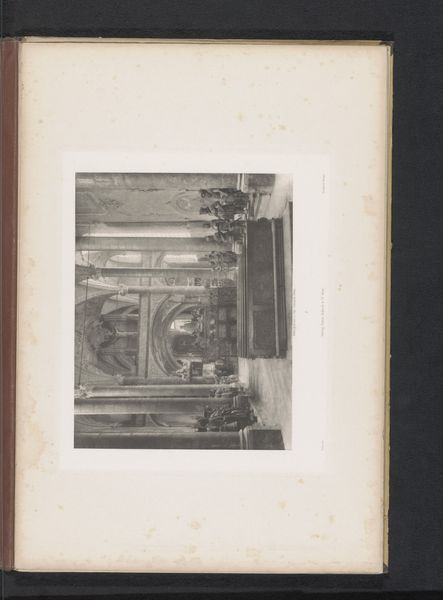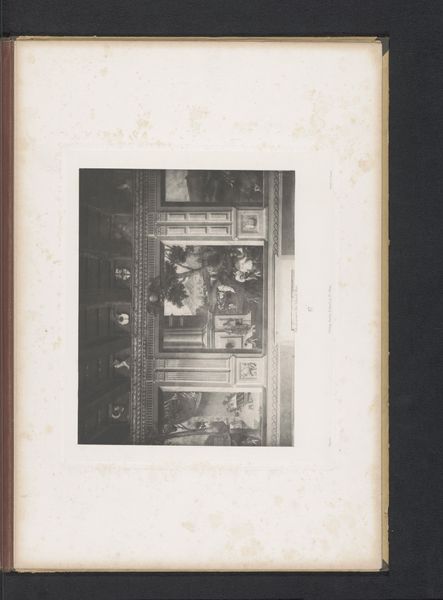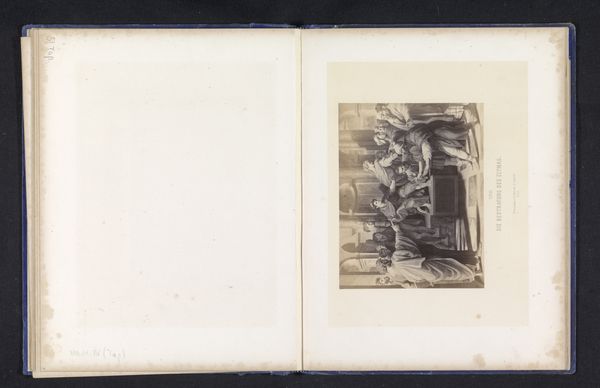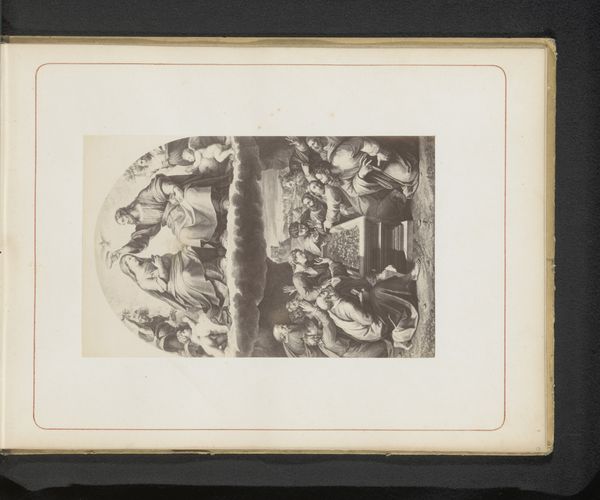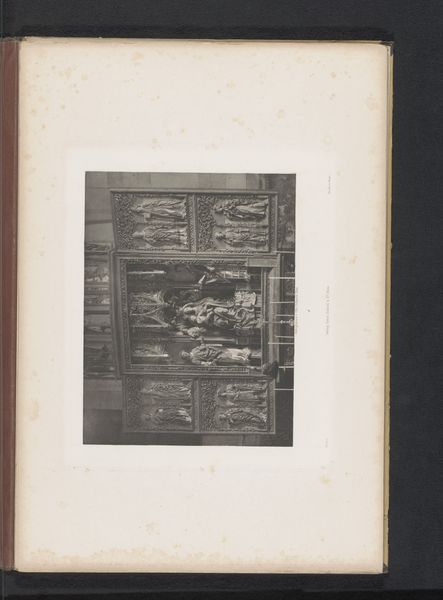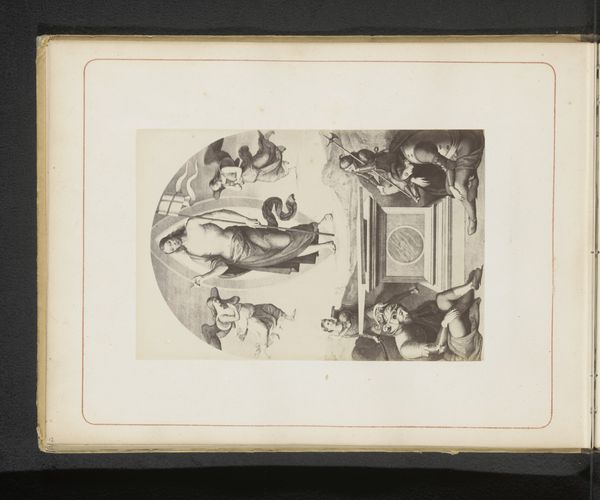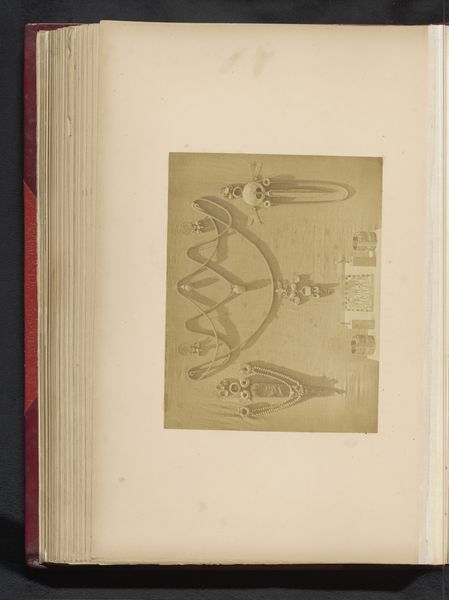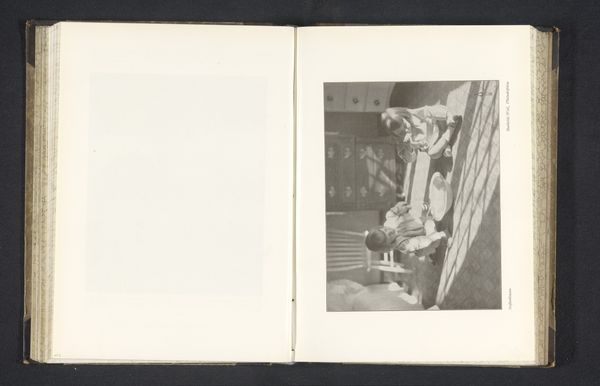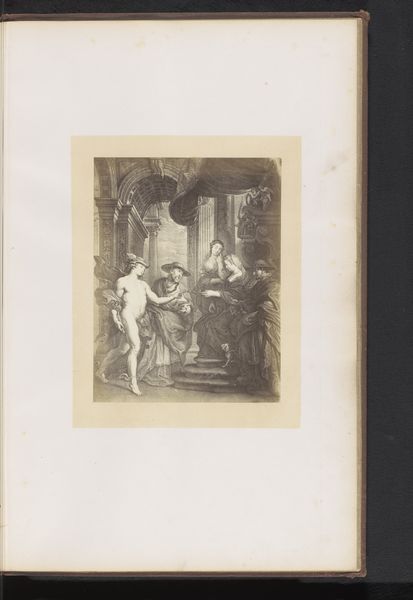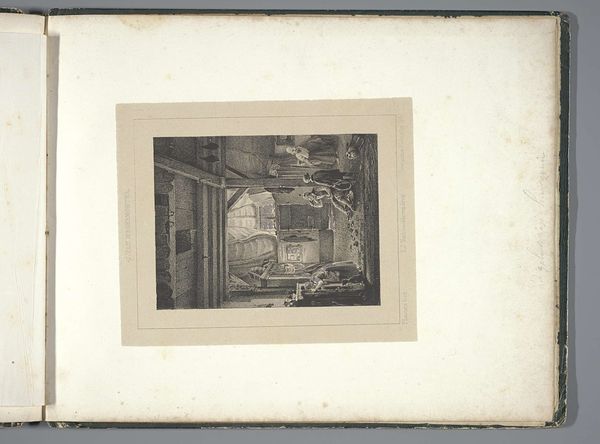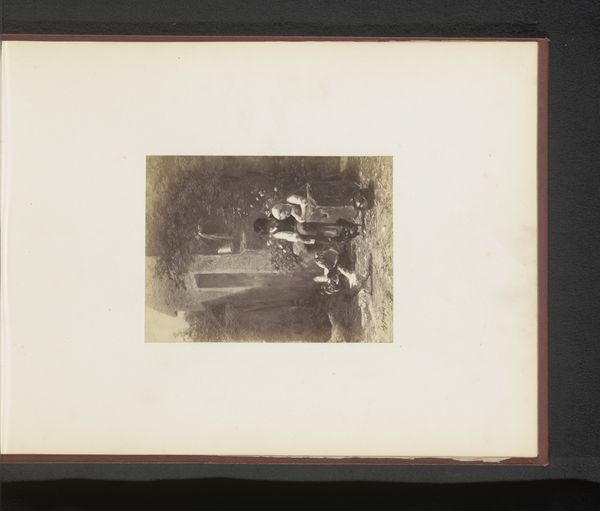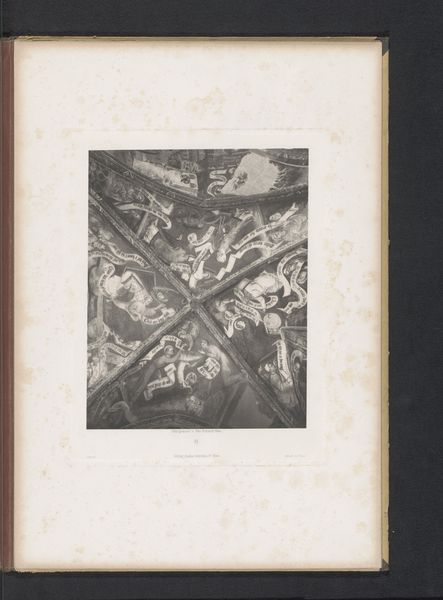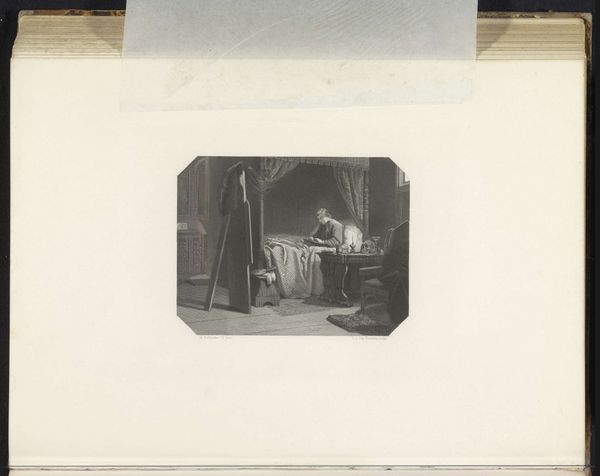
Fotoreproductie van een gravure naar Maria en vier heiligen door Pietro Perugino in het Vaticaan before 1868
0:00
0:00
print, photography
# print
#
sculpture
#
figuration
#
11_renaissance
#
photography
#
italian-renaissance
Dimensions: height 185 mm, width 149 mm
Copyright: Rijks Museum: Open Domain
Curator: Here we have a photograph, taken before 1868, titled "Fotoreproductie van een gravure naar Maria en vier heiligen door Pietro Perugino in het Vaticaan," which translates to "Photographic reproduction of an engraving after Mary and four saints by Pietro Perugino in the Vatican." It's fascinating, a copy of a copy. Editor: My initial thought is that it's very subdued, almost ghostly. The grayscale tones and soft focus give it an ethereal, timeless quality, but it also looks somehow removed, detached from the original's vibrancy. Curator: Absolutely. Consider the implications of reproduction here. This is photography documenting an engraving of a painting, all means of creating and disseminating imagery. Who was consuming this, and why? Was it about access to great art, or perhaps something else? Editor: It strikes me that this method also democratizes the original Perugino piece. Suddenly, its image is available beyond the Vatican walls, even if mediated through these multiple processes of reproduction. Curator: Precisely! The original engraving itself would have been made using certain methods and tools and then multiplied and disseminated. What can we infer about how that original was perceived and valued if such measures were employed? What kind of labour did its reproduction involve? Editor: The fact that it’s photographed suggests a further industrialization of image-making. Photography enabled an entirely different level of mechanical reproduction compared to hand-engraving. Its function moves away from pure artistry into more practical means, of distribution and documentation. It certainly alters the aura, wouldn’t you say? Curator: Undoubtedly. And this also shows the growing reach of museum culture; people might see photographic prints like this and maybe become interested in actually viewing the art themselves in collections. It blurs the lines of what is 'original', what is accessible, and ultimately what becomes canon. Editor: This exploration through these successive layers helps reveal changing roles and perceptions of artistic works in the 19th Century. Thank you! Curator: Indeed! Each layer holds its own story about the mechanics of art production. A great conversation.
Comments
No comments
Be the first to comment and join the conversation on the ultimate creative platform.
